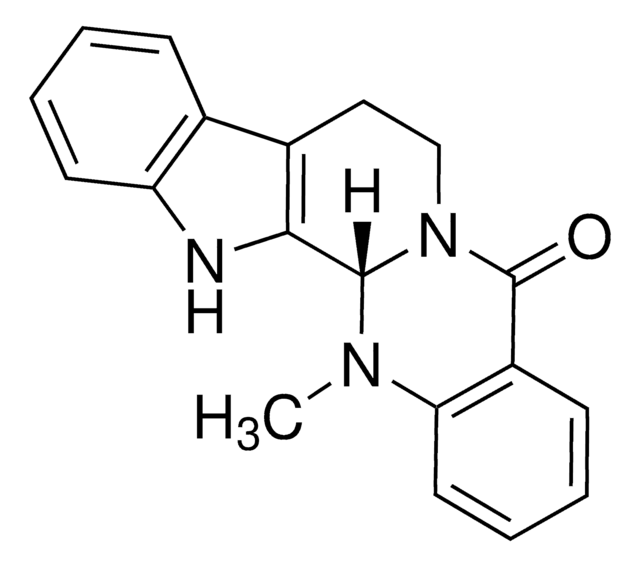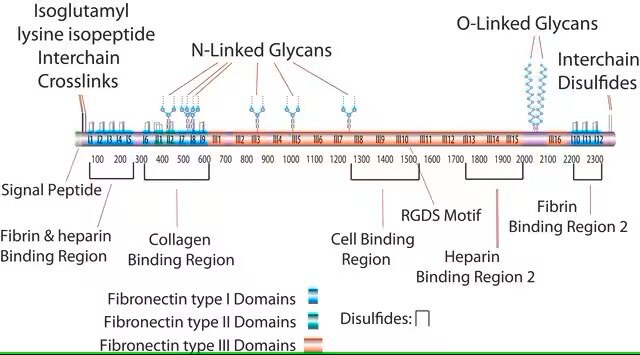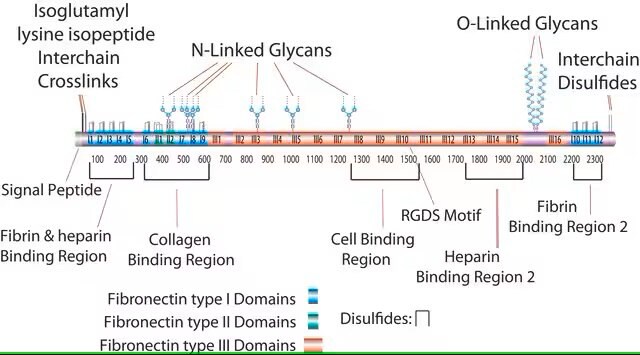F4759
Bovine Fibronectin
from bovine plasma, powder, suitable for cell culture
Synonyme(s) :
Fibronectin
About This Item
Produits recommandés
Nom du produit
Fibronectine, powder, BioReagent, suitable for cell culture
Source biologique
bovine plasma
Niveau de qualité
Stérilité
sterile
Gamme de produits
BioReagent
Forme
powder
Poids mol.
~450 kDa
Conditionnement
pkg of 1 mg
pkg of 2 mg
pkg of 5 mg
Concentration
≥1 mg protein/mL
Technique(s)
cell culture | mammalian: suitable
Couverture de surface
1‑5 μg/cm2
Solubilité
H2O: 1 mg/mL at 37 °C (Store reconstituted solution in working aliquots at -20°C or lower.)
Numéro d'accès NCBI
Numéro d'accès UniProt
Conditions d'expédition
dry ice
Température de stockage
−20°C
Informations sur le gène
bovine ... FN1(2807940)
Vous recherchez des produits similaires ? Visite Guide de comparaison des produits
Description générale
Application
- Used for coating the glass coverslips for the culture of decidual stromal cells (DEC)
- Cell movement assays (culture plates were coated with fibronectin)
- Cell spreading and immunofluorescence
- Protein specificity
- Integration of sensor films into microfluidic chips
- Histological and Immunohistochemical (IHC) analyses
- Used in primary cell cultures from patients with lung carcinoma
Actions biochimiques/physiologiques
Attention
Code de la classe de stockage
11 - Combustible Solids
Classe de danger pour l'eau (WGK)
WGK 3
Point d'éclair (°F)
Not applicable
Point d'éclair (°C)
Not applicable
Équipement de protection individuelle
Eyeshields, Gloves, type N95 (US)
Faites votre choix parmi les versions les plus récentes :
Certificats d'analyse (COA)
Vous ne trouvez pas la bonne version ?
Si vous avez besoin d'une version particulière, vous pouvez rechercher un certificat spécifique par le numéro de lot.
Déjà en possession de ce produit ?
Retrouvez la documentation relative aux produits que vous avez récemment achetés dans la Bibliothèque de documents.
Les clients ont également consulté
Articles
Fibronectin (FN) is a multifunctional, extracellular plasma glycoprotein produced by hepatocytes that circulates at near micromolar concentration and assembles into extracellular matrix fibrils at cell surfaces along with locally produced cellular FN.
Cancer stem cell media, spheroid plates and cancer stem cell markers to culture and characterize CSC populations.
Cancer stem cell media, spheroid plates and cancer stem cell markers to culture and characterize CSC populations.
Extracellular matrix proteins such as laminin, collagen, and fibronectin can be used as cell attachment substrates in cell culture.
Protocoles
Dilute fibronectin to the desired concentration. Optimum conditions for attachment are dependent on cell type and application. The typical coating concentration is 1 – 5 ug/cm2.Fibronectin coating protocol, products, and FAQs.
Notre équipe de scientifiques dispose d'une expérience dans tous les secteurs de la recherche, notamment en sciences de la vie, science des matériaux, synthèse chimique, chromatographie, analyse et dans de nombreux autres domaines..
Contacter notre Service technique











